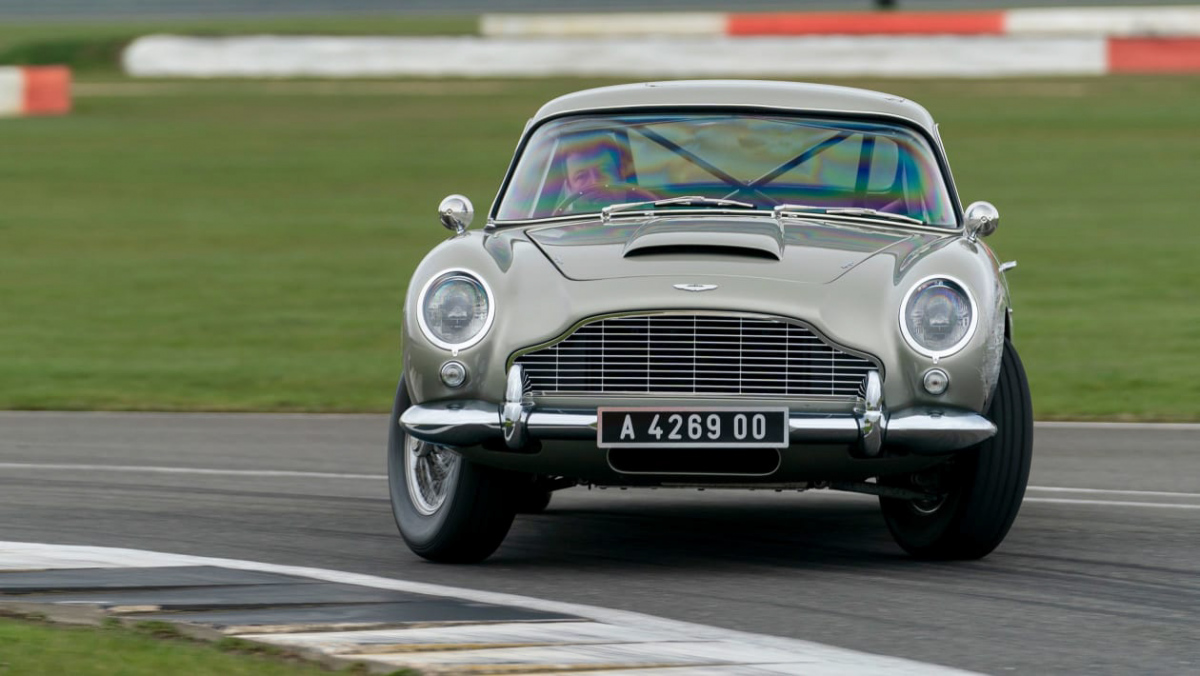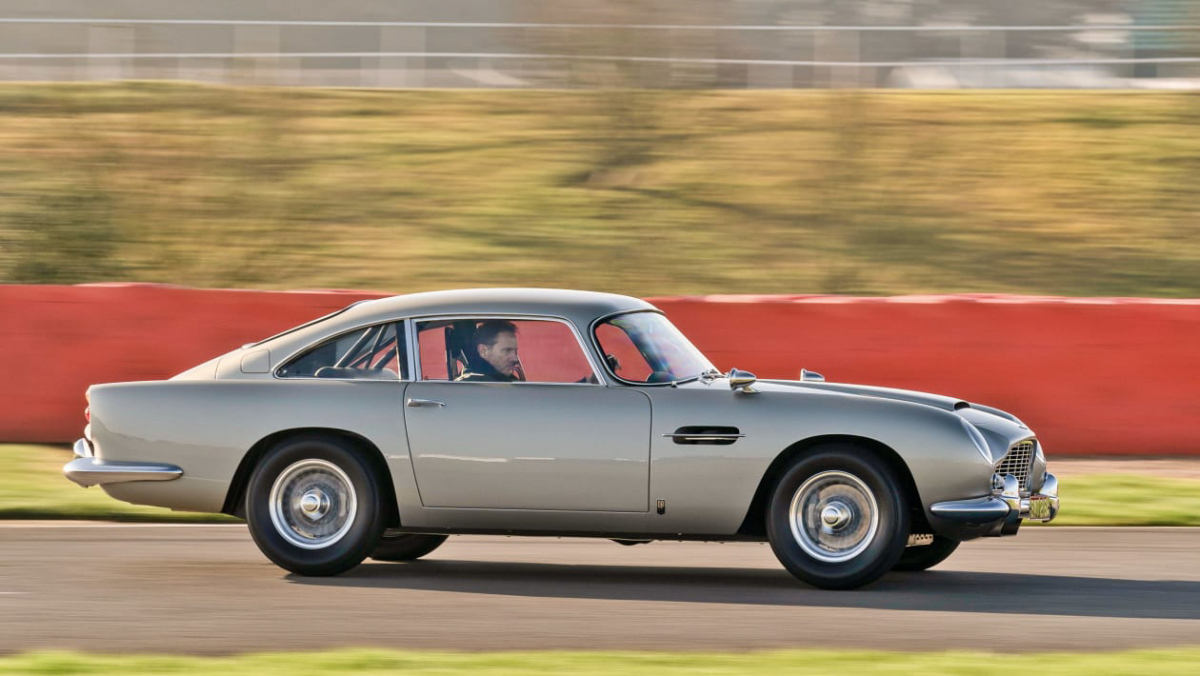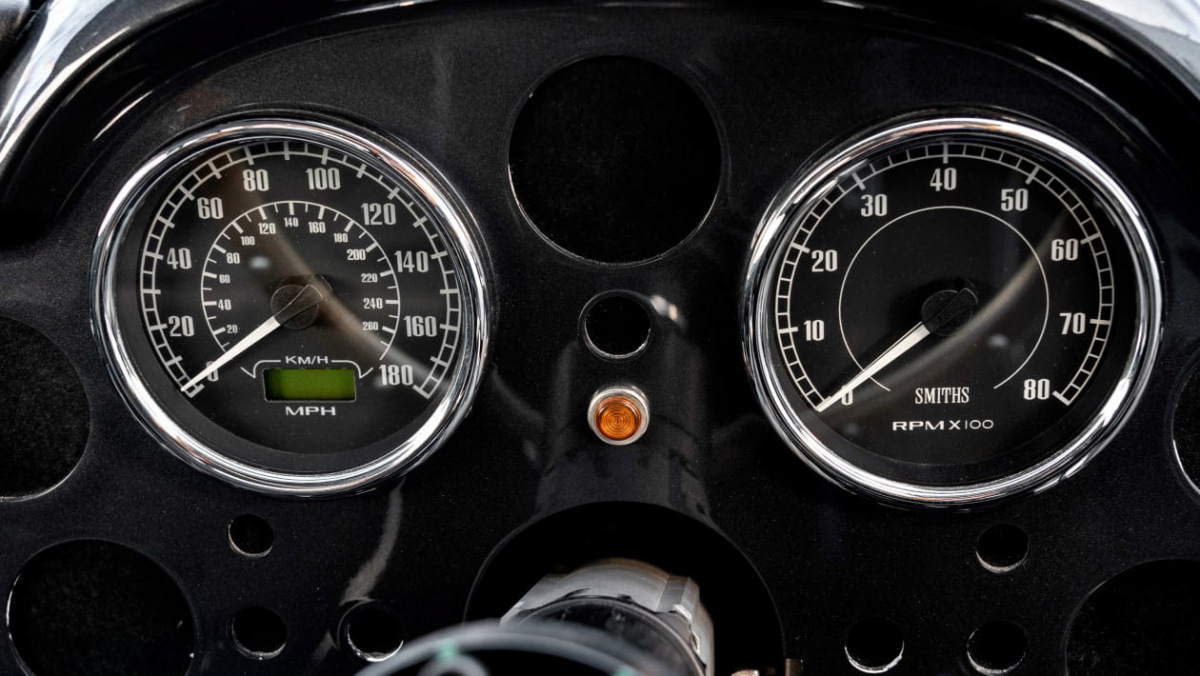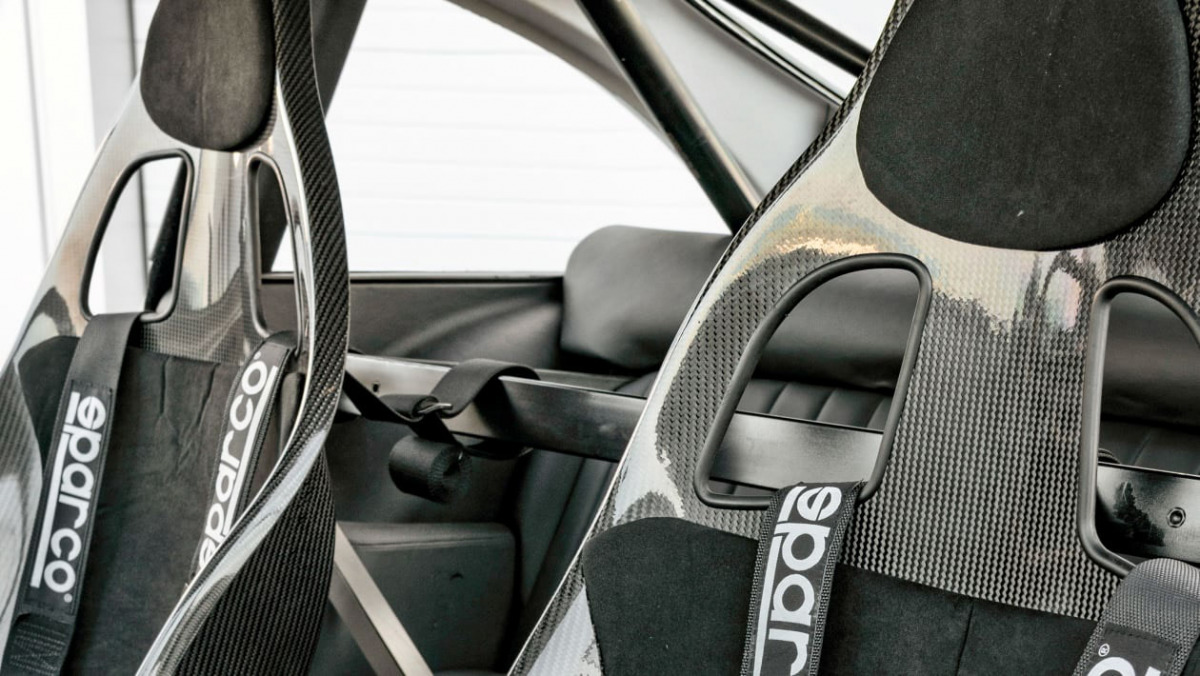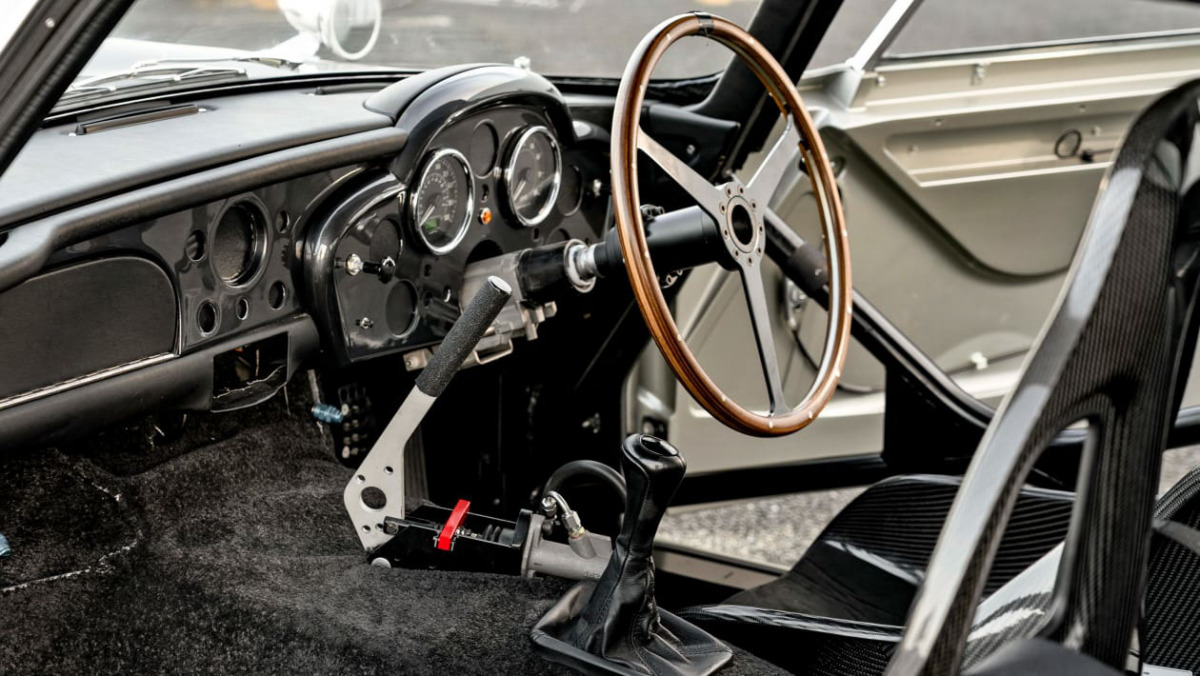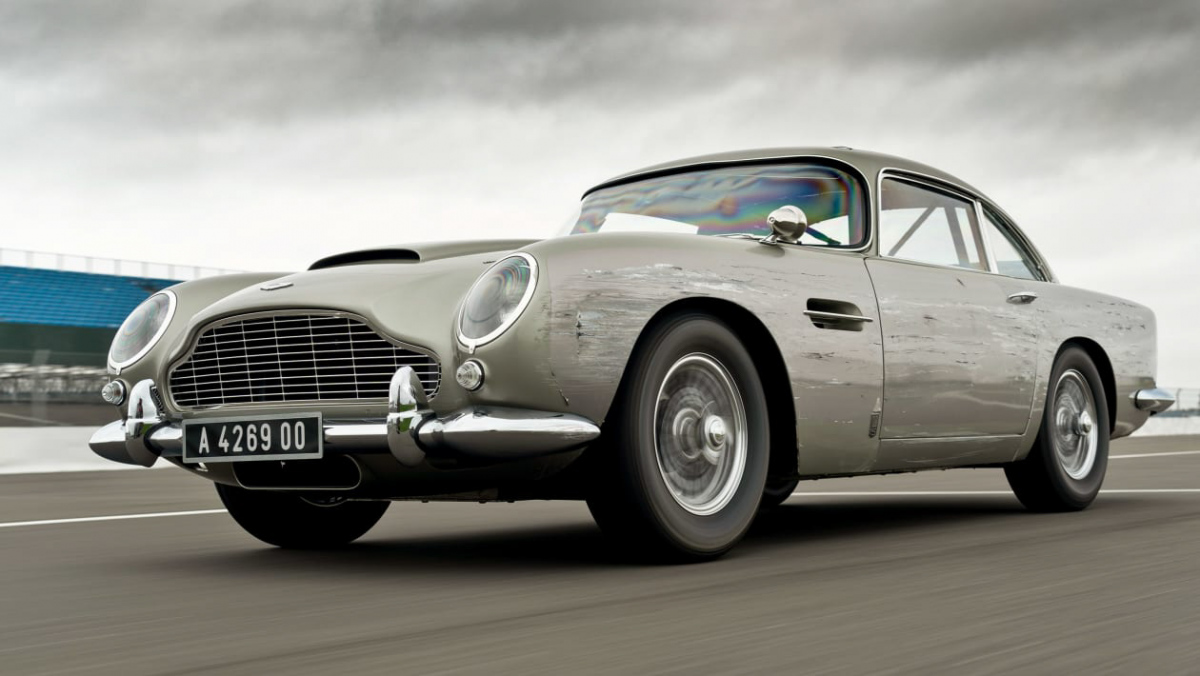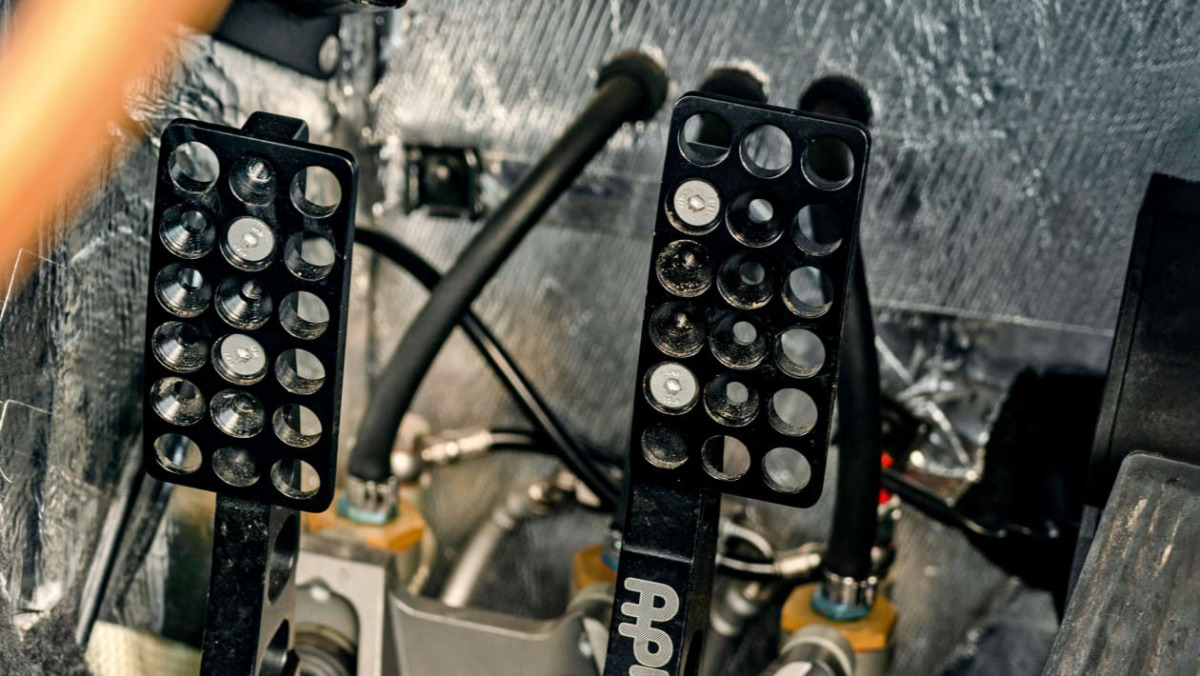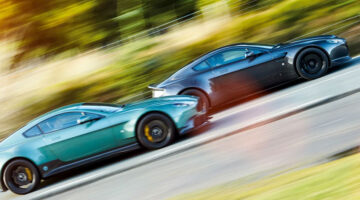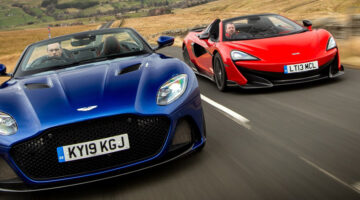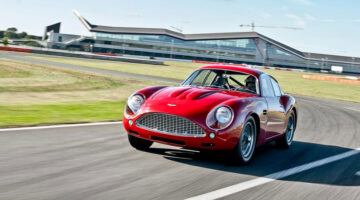When is an Aston not an Aston? When it’s a DB5 fresh from the set of No Time To Die. Don’t break it, Meaden…
Forget for a moment that this Aston Martin DB5 replica is a purpose-built stunt car created for the latest Bond movie, No Time To Die, and instead consider the following bold, yet simple statement: this is the purest, most exciting, most entertaining and most downright enjoyable new car that will drive all year.
How so? Well, for starters it weighs 1000kg. It’s also rear-wheel drive and has a six-speed manual transmission with a mechanical limited-slip differential. Under the bonnet is a high-revving, 340bhp naturally aspirated straight-six. Oh, and it wears modest-sized tyres, lays no claim to blistering lap times or neck-snapping downforce, and has a complete absence of electronic driver aids altogether.
> Lunaz reveals electric restomod Aston Martin DB6
It all seems too good to be true. And in a way it is, for this replica DB5 exists only to perform in some of No Time To Die’s gnarlier four-wheeled action sequences. As such it’s a fantasy car in every sense of the word. Yet here we are at Aston Martin’s Stowe Complex test facility, with free rein to blast around to our heart’s content.
Like most things movie-related, much of this ‘DB5’ is an illusion, but don’t confuse it with the crude scratch-built stunt cars of yore. It looks every inch a DB5 because it is every inch (or rather every millimetre) a DB5, thanks to carbonfibre body panels shaped by 3D laser scans of an original car. Given stunt cars live hard lives, these panels are also designed to be unbolted and replaced with a minimum of downtime.
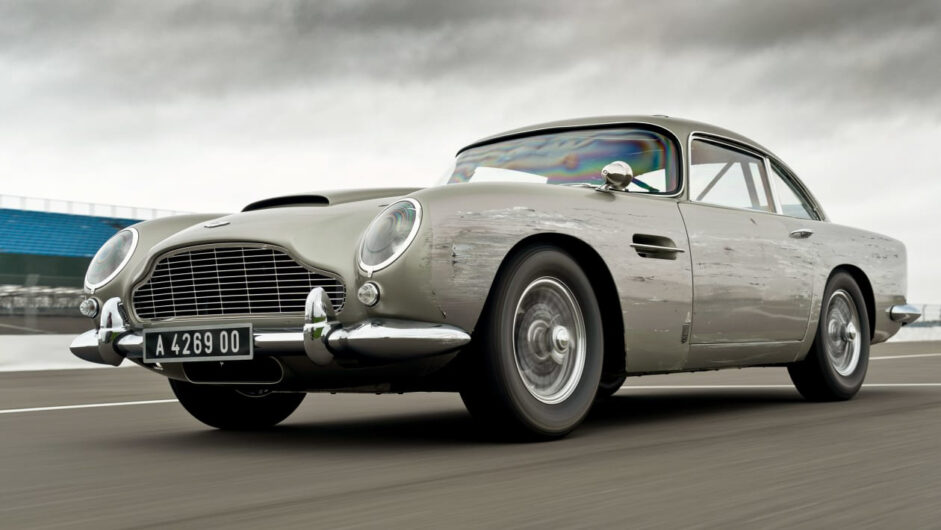
Beneath the panels is a bespoke spaceframe chassis, the dimensions of which were dictated by the original DB5’s track and wheelbase, and with all mounting points for engine and transmission tailored to those of the donor hardware. Aston’s spokesperson was coy about revealing the source of these key components, but did concede that the list of (relatively) modern naturally aspirated straight-six engines developing circa 340bhp is not a long one.
The decision to use the engine and gearbox from a BMW E46 M3 is inspired for many reasons. Not least the fact it’s one of the finer internal combustion engines. That it sounds similar to a classic Tadek Marek-designed straight-six and packages similarly in the engine bay made it a natural choice. An abundance of donor cars, plus modern reliability mated to electronics that predate the huge complexity and total integration of the latest systems adds much-needed simplicity and on-set adaptability.
The dynamic demands of filming on Bond movies are legendary. Indeed they are the reason why when presented with the task of sourcing and preparing eight original DB5s for No Time To Die, Aston’s chief special operations officer, David King, took the unorthodox decision of recommending his team designed and built replicas from scratch. ‘You can’t really say no when it’s a Bond film,’ explains King, ‘but finding that many original cars, bringing them all up to the same spec and making them strong, reliable and dynamically capable enough to take all the abuse that they’d get in the film was pretty much impossible.’
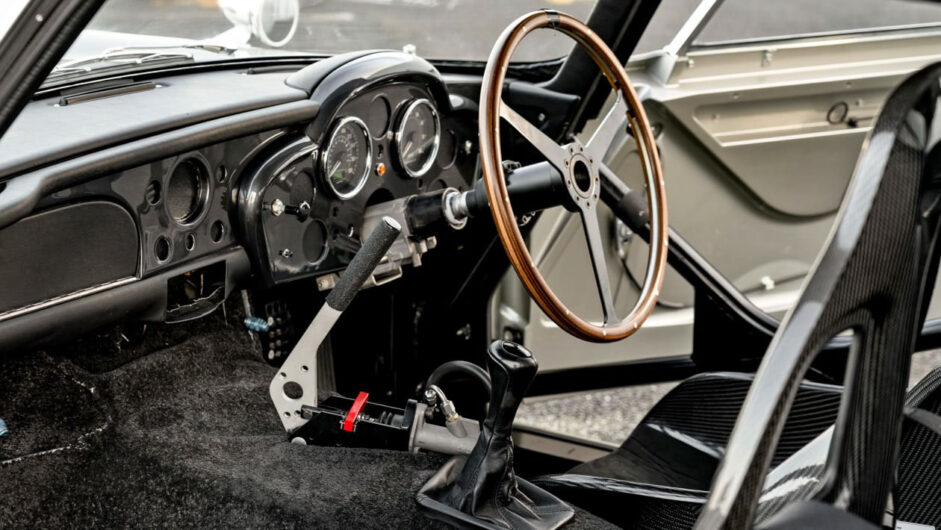
It seems hard to believe, but the timeframe to design, engineer and build these cars was just six months – and all while the Special Ops team were immersed in building the first running Valkyrie development prototype. Lately Aston has been making headlines for the wrong reasons, but it’s hard to imagine another marque that could be at the heart of two such different, yet such compelling projects at the same time.
Even when you know the stunt car owes nothing to an original DB5 it’s very hard not to believe it’s the real deal. The fit and finish of the bodywork is extremely high, the detailing accurate and authentic. Even the feel of the door latch and the way it sounds when it opens and closes mimic the genuine article. Once you’ve opened the door, the stunt car’s true purpose becomes clear, with a racing seat and roll-cage dominating the interior. There’s a rudimentary instrument pack that looks like the original – at least if you squint – and the wooden-rimmed steering wheel completes the period scene, though the rally-style hydraulic handbrake rather gives the game away.
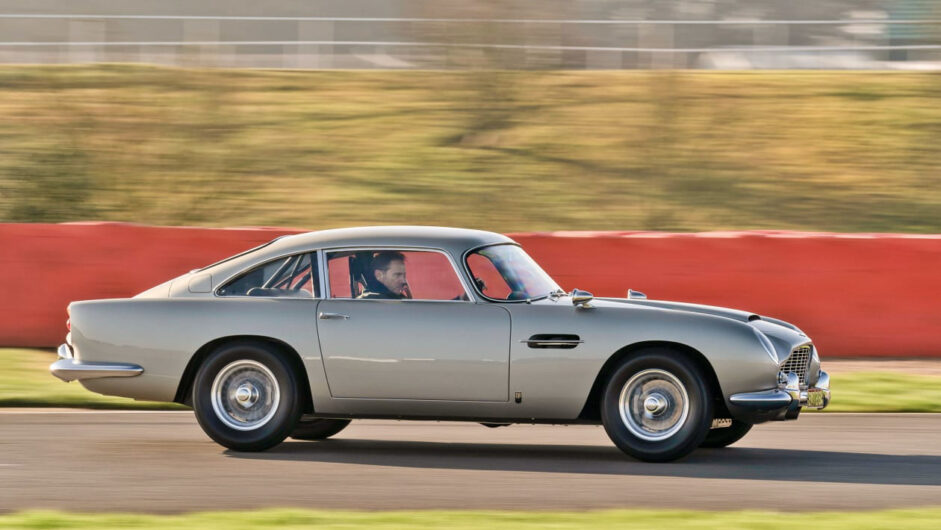
You could forgive this car for feeling a bit crude or rough around the edges; after all, it only has to hoon around for the cameras. Yet it has a solidity and integrity that’s palpable from the moment you start the engine. The gearlever is straight from the E46 and has the same unmistakable feel as it slots through the gate. Likewise the S54 M Power engine is fabulously crisp and responsive, snorting and bellowing in exuberant style in an epic mashup of sixties Brit and noughties Bavarian.
The steering is power assisted. Overly so, actually, which requires you to show it calm hands until you get fully dialled-in. That wooden steering wheel also comes with challenges, one being it is tricky to know when you’ve returned it to the straight ahead, another being the metal knobbles on the back face of the rim that clout your knuckles if you get a bit flustered.
Anything with a 300-plus bhp-per-ton power-to-weight ratio is going to feel pretty darned lively, but when it’s sitting on narrow rubber (Avon road-legal historic racing tyres that sport a classic tread pattern but modern compounds), that impressive urgency comes with refreshingly modest grip levels.
You don’t have to drive it wildly sideways, but it’s very happy to play along if you want to, as you’d expect from a car designed to slide to order and usually driven by three-time British Rally Champion and 007 driving double Mark Higgins. What is perhaps less expected is the precision and control with which it does so. Much of this is thanks to the suspension, which features rallycross-spec springs and dampers developed by Prodrive. It has a brilliant sense of balance and a fabulous inertia-free ability to change direction that breeds tremendous confidence. You really do get to the point where you can do anything with it.
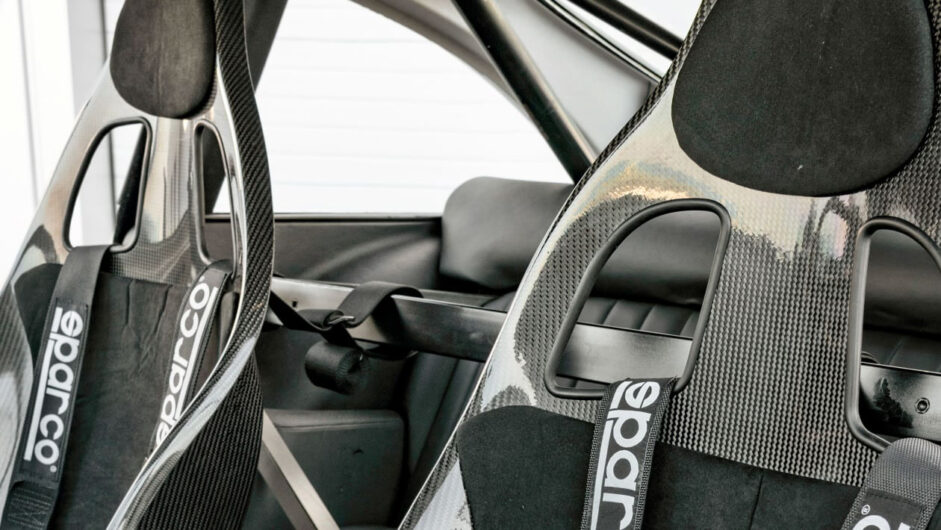
Sadly, this car isn’t road legal (though tantalisingly one suspects it could be made so without too much difficulty via IVA), but it unquestionably has the makings of a sensational sporting GT. To offer you some kind of context, an E46 M3 – one of our favourite performance cars of the 21st century – weighs 500kg more. For a comparable power-to-weight ratio, think Porsche 991 GT3.
There’s something rather wonderful about this back-to-basics machine being designed and built by the very same team of engineers responsible for developing the Valkyrie hypercar. Yet it’s also rather depressing that this not-for-sale stunt car exposes just how badly the ‘more, more, more’ culture has corrupted successive generations of high performance series production cars.
All power to Aston Martin for reminding us – even if it was inadvertently – that less weight, less power and less grip are the essential ingredients in a great driver’s car.
Aston Martin DB5 stunt car specs
| Engine | In-line 6-cyl, 3246cc |
| Power | 348bhp @ 7900rpm |
| Torque | 269lb ft @ 5000rpm |
| Weight | 1000kg (354bhp/ton) |
| 0-100kph | sub-5.0sec (est) |
| Top speed | n/a |
| Basic price | It’d probably be rude to ask |
This article originally appeared at evo.co.uk
Copyright © evo UK, Autovia Publishing

